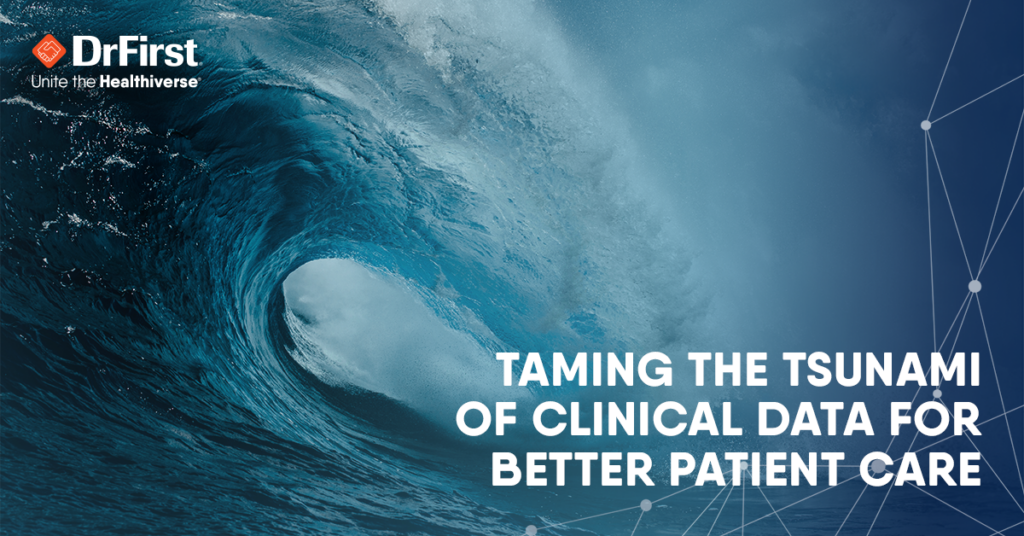Colin Banas, M.D., M.H.A.
Taming the Tsunami of Clinical Data for Better Patient Care
Twenty years ago, one of the biggest challenges for my fellow hospitalists and me was accessing relevant patient data. Many times, after admitting patients to the cardiology intensive care unit, I would have to chase down the paper printouts of their echocardiogram results to be able to provide the urgent care they needed.
Ironically, today, healthcare providers face the opposite problem. Clinicians are overwhelmed by a tidal wave of information, most of which is not even usable in their electronic health record (EHR) systems.
Enhancing Data to Streamline Workflows
By digitizing health records and implementing new technology at the point of care, healthcare has become much better at moving clinical data from point A to point B. Unfortunately, clinicians struggle with the flood of information because data often arrives from external sources as a block of text instead of populating data in the appropriate fields within the receiving EHR system. This happens when the system sending the information uses different formatting or terminology than the system receiving it.
So, unless clinicians undertake the time-consuming and error-prone task of transcribing the information field by field, the EHR can’t access it for critical safety alerts, and doctors don’t see crucial information about patients’ medication history.
This is where clinical-grade AI plays a pivotal role in interoperability with the receiving system. It gives structure to free text, resolves inconsistencies between different drug compendia, and infers missing data when clinically safe to do so. Human oversight ensures that AI provides a head start in medication reconciliation while allowing clinicians to review and accept the data.
Clinical-Grade AI Facilitates Decision-Making
The impact of clinical-grade AI on medication reconciliation is profound. It serves as a force multiplier for staff, significantly reducing the time required for pharmacy technicians to complete a medication history and allowing them to see more patients. More importantly, it improves patient safety by reducing adverse drug events (ADEs). Based on their data, our customers report significant reductions in ADEs after implementing DrFirst solutions.
By putting accurate patient data in front of providers when they need it, clinical-grade AI facilitates informed decision-making. Its role in filling data gaps, improving interoperability, and enhancing medication reconciliation streamlines clinical workflows and contributes to safer and more efficient healthcare.
On the Pop Health Perspectives podcast, I recently spoke about how AI can help tame the tsunami of data, plus how to make patient costs available at the point of prescribing and encourage patient adherence with prescription pickup reminder messages. Learn more by listening to the full discussion here:


















